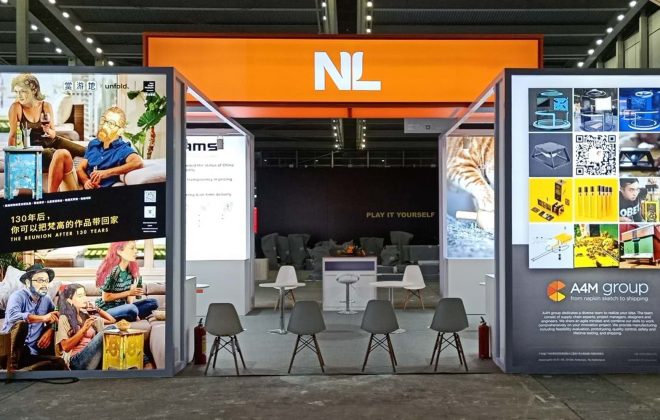China’s Thriving Fascination with South American Tourism and FDI: A Mutual Success Story
China’s enduring fascination with South America extends beyond the realms of tourism, venturing into foreign direct investment (FDI) to reap mutual benefits. South America’s cultural richness, diverse landscapes, and thriving economies have positioned it as a must-visit destination for Chinese tourists and an emerging hotspot for Chinese investors. In this article, we will delve into this dynamic relationship, unveiling the exciting prospects that await both regions.
Tourism in South America
In recent years, South America has emerged as a global tourism sensation, magnetizing adventurers and culture enthusiasts alike. With its breathtaking landscapes, vibrant cultures, and one-of-a-kind experiences, this continent offers an enchanting blend of allure and fascination.
South America is witnessing an unprecedented surge in tourist arrivals, an upward trajectory that shows no sign of abating. The region’s diverse natural wonders, including the awe-inspiring Amazon rainforest, the majestic Iguazu Falls, and the towering Andes mountain range, are irresistibly drawing travelers from around the world.
Among South America’s most sought-after destinations is Peru’s ancient Inca city of Machu Picchu, a UNESCO World Heritage site that stands as a symbol of historical magnificence. Brazil’s Rio de Janeiro, with its iconic Christ the Redeemer statue and vibrant Carnival celebrations, also ranks high on the must-visit list.
But South America offers more than just famous landmarks; it weaves a tapestry of unique and unforgettable experiences. From traversing ancient trails in the stunning Patagonia region to swimming with pink dolphins in the Amazon River, South America ensures a myriad of adventures to treasure.
Savoring the culinary treasures of South America is a delight in itself. Whether indulging in Argentina’s sizzling steaks, relishing the flavors of Peruvian ceviche, or sipping a refreshing caipirinha in Brazil, food enthusiasts find their taste buds rejoicing.

The Impact of Chinese Tourism
Growing flight connections have unlocked new doors for Chinese tourists to explore South America. In 2018, Peru welcomed over 50,000 Chinese tourists, marking a 20% increase from the previous year. The trend continues in Chile and Brazil, with Chinese tourists seeing increasing growth.
Chinese tourism has been a boon for South American economies, with Chinese tourists often outspending their international counterparts. On average, a Chinese tourist in South America spends approximately $1,100 during their stay, in contrast to the $648 spent by visitors from other countries.
The allure of South America extends to a diverse demographic of Chinese tourists, united by a shared thirst for adventure, cultural immersion, and unique experiences. According to the China Tourism Research Institute, the estimated number of Chinese passport holders in 2019 is around 170 million, projected to reach over 200 million by 2025. These travelers typically encompass well-educated, affluent, and young tourists, eager to explore and learn. Seeking authenticity and novelty, these tourists are poised to continue reshaping South American tourism.
Chinese tourists visiting South America are well-educated and typically employed in high-paying jobs. The age of Chinese tourists to South America is between 40 to 65 but there is also a younger demographic aged between 20 to 34 who are recurring travelers taking interest in the region.
Chinese tourists in South America favor a wide array of activities, such as cultural, adventure, ecotourism, and luxury tourism. They often engage in cultural tourism by visiting historical sites, museums, and cultural centers. These travelers are also inclined towards adventure tourism, including activities like hiking, trekking, and camping. Additionally, they show a keen interest in ecotourism, visiting national parks, and exploring the region’s natural wonders. Luxury tourism is another facet, with Chinese tourists indulging in fine dining, staying at luxury hotels and resorts, and enjoying high-end shopping experiences.

Benefits of Chinese FDI
South American countries are not only capturing the hearts of Chinese tourists but are also attracting Chinese investments at an unprecedented rate. These investments have been a catalyst for growth, especially in sectors like agriculture, energy, and infrastructure. In 2022, Chinese OFDI in Latin America and the Caribbean reached record highs, amounting to $12 billion, further boosting mutual benefits.
China’s rapid economic growth has transformed its relationship with Latin America, making it the region’s largest trading partner. In 2000, China accounted for a mere 2% of Latin America’s exports. However, over the next eight years, trade between the two regions surged at an average annual rate of 31%, reaching a value of $180 billion in 2010. By 2021, trade had tripled to a record $450 billion, a figure that remained largely unchanged in 2022. Some economists predict that trade between China and Latin America could exceed $700 billion by 2035.
Latin America’s exports to China are primarily raw materials such as soybeans, copper, petroleum, and oil, which China needs to fuel its industrial development. In return, Latin America imports higher-value-added manufactured goods from China. This trade imbalance has raised concerns among some experts, who worry that it could undercut local industries with cheaper Chinese goods.
Despite these concerns, China remains a critical economic partner for Latin America. Beijing has free trade agreements in place with Chile, Costa Rica, Ecuador, and Peru, and twenty-one Latin American countries have so far signed on to China’s Belt and Road Initiative (BRI), a massive infrastructure development program. These investments are expected to further strengthen economic ties between China and Latin America in the years to come.
The Takeaways
The interplay between China and South America through tourism and FDI is a testament to mutual growth and exploration. As Chinese tourists unearth South America’s treasures, their investments fuel the region’s development, economic prosperity, and local job opportunities. This symbiotic relationship is destined to flourish, promising a brighter future for both China and South America. The bridge connecting these two regions is not merely a pathway to adventure but a gateway to shared prosperity. The dynamic interaction is reshaping not only tourism but also the economic landscape of South America, creating a win-win scenario that demonstrates the immense potential of this flourishing relationship.
How South American businesses can attract more Chinese?

South American businesses can do a number of things to better attract Chinese tourists, including:
- Accepting Chinese Payment Methods: Many Chinese tourists are not familiar with credit cards or other Western payment methods. Businesses that accept Chinese payment methods, such as Alipay and WeChat Pay, will be more attractive to Chinese tourists.
- Providing Chinese-Language Information and Services: Chinese tourists often prefer to receive information in their native language. Businesses that provide Chinese-language information and services, such as websites, brochures, and staff who speak Chinese, will be more welcoming to Chinese tourists.
- Promoting their Business on Chinese Social Media Platforms: Chinese tourists are heavy users of social media platforms such as WeChat and Weibo. Businesses that promote their business on Chinese social media platforms will be more likely to reach Chinese tourists.
- Partnering with Chinese Travel Agencies and Tour Operators: Chinese travel agencies and tour operators book travel for a large number of Chinese tourists. Businesses that partner with Chinese travel agencies and tour operators will be more likely to be included in travel packages and itineraries.
- Offering Unique and Authentic Experiences: Chinese tourists are looking for unique and authentic experiences. Businesses that offer unique and authentic
Positioning for Chinese tourists will take much time and investment that may not be suitable for your business. That’s why we’re offering an affordable Chinese tourism masterclass in Spanish to help you seize this opportunity and become a better host.
Looking to Understand New China?
Taught by 10 experts with extensive experience in dealing with the Chinese market and the tourism industry as a whole, the aim of the Chinese tourism course is to provide participants with the knowledge and skills necessary to understand, address, and take advantage of opportunities in the growing Chinese tourism industry. This course focuses on key aspects such as culture, travel preferences, expectations of Chinese tourists, and effective marketing strategies to attract this ever-expanding market. Upon completion of the course, participants will be prepared to capitalize on opportunities in the Chinese tourism industry and provide exceptional experiences to Chinese visitors.
Don’t miss this opportunity to elevate your tourism business and tap into the vast Chinese tourism market. Join us on this exciting journey and expand your horizons in the world of tourism. We look forward to having you as a part of this enriching experience!
Register now: https://book.stripe.com/28o02Daynfm50NO28i
For more information about the STW Education Program Pilot and how to participate, please visit [www.shaketowin.net] or contact Rafael Vega at Rafael.vega@shaketowin.net or Emily Cheung at Emily.cheung@shaketowin.net
About STW Innovation
STW Innovation is a leading provider of innovative solutions for the tourism industry. With a strong focus on digital transformation and market trends, STW Innovation aims to empower businesses in the tourism sector to thrive in the ever-changing global landscape. Through cutting-edge technology, training programs, and strategic partnerships, STW Innovation helps tourism professionals adapt, grow, and succeed.
Contact:
Emily Cheung, Founder & CEO, STW Innovation Company Limited
[+852 93680717 | +86 18321126094] [Emily.cheung@shaketowin.net]




